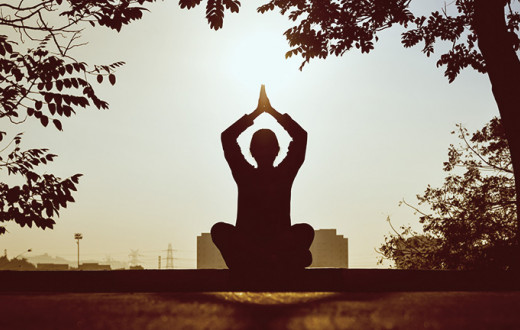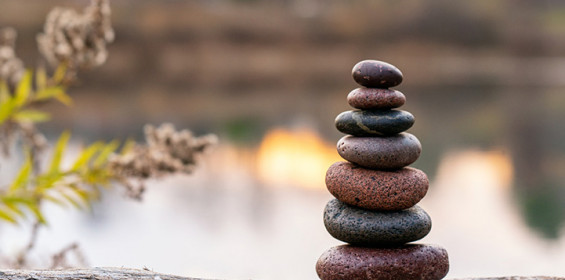By Elizabeth Herman | Posted: June 20, 2019
Try as I might, some bad habits have stuck with me throughout the years. Some examples include sleeping after the alarm rings in the morning, eating a little too much, and looking for reasons to complain. But it’s encouraging to notice all the good habits that I’ve added to my daily routine, such as flossing, a vegetarian diet, walking outside, meditation, and yoga.
In this two part series on habits, Elan Gepner-Dales conducts a brief meditation to help you clarify what tendencies you’d like to grow and stop, and talks about how the mind and brain work.
Exploring what works best
Elan states, “So often we’re just repeating the same habits that we’re stuck in, and it isn’t taking us where we really want to go. Around exercise, sleep, and diet, there have been so many different skills that I’ve had the opportunity to learn in life. What do we really want? What’s happening in our brain that allows our changes to last?”
He introduces an exercise that he learned from Bill Herman, an internationally known teacher. You close your eyes and come up with one thing you want to bring into your life, and one thing you want to let go of. If there’s a habit that isn’t serving you, and one you’d like to cultivate, clarifying those things in your thoughts can move you towards changing them.
Math of the mind
You learned in school that math always works. But in part 2 of his talk, Elan points out how adding good habits is more helpful than trying to subtract bad ones. Based on the principle that “what you resist will persist,” this reality can reduce your frustration when seeking to change your habits.
You let go of trying to stop what you don’t want to do, and focus on doing what you need to. You add new, good habits instead of subtracting old, bad ones. This helps us accept the quality we most want to let go of, embracing it so it won’t persist.
By understanding the mind’s mathematics, the reason it’s difficult to change habits makes better sense, and you work around obstacles with greater ease. For example, if I tell you to stop thinking about a monkey jumping up and down, you’ll automatically think of that monkey. And then, when you try to push that monkey away, it becomes that much harder to forget about it.
In this way, you realize that mental subtraction doesn’t work. Instead of eliminating the monkey from your thoughts, it’ll be better to change the subject and busy your mind with something else, like elephants, butterflies, a task at your job, a physical activity or sport, or a conversation with a friend. In other words, don’t be distracted by trying to get rid of negative habits.
In Elan’s words, “accept your faults, but put your attention on the habit, skill or quality that you’re looking to build and cultivate positively.” He shares a quote from Rumi, “Water the fruit trees, don’t water the thorns. This means put your attention on the thing you’re looking to cultivate, and you’ll have success.” As an example, he shares that when switching to a vegetarian diet, he found it helpful to focus on delicious and plentiful vegetarian fare, rather than eliminating meat.
The brain can change
Because of our ability to reflect and control our own repeated behaviors, the brain’s need for safety can make the beginning of this process most difficult. Elan cites Johann Berlin and Dr. Evian Gordon, who share tools through which to activate change, given the resistance to new activity that our brain normally has.
The numbers of repetitions make a difference, and reveal the power of practice. After 20 repetitions, a pattern in the brain becomes substantial and observable. After 30, you have established the activity as a habit. After 1,000, the behavior becomes automatic to your brain. If you can do something once, you can do it 7 times, and then more easily make it to 20, 30 and 1,000, and as you keep at it you’ll see that you’ve added a new habit!
The practice then becomes the destination, according to Elan. By staying with it, coming back to repetition of the desired behavior, we grow. “The practice ends up feeding us. Mastery is simply a process of returning to practice, over and over and over.”
Building a meditation practice
As Elan puts it, “Not all habits are equal in terms of how they will serve you in your life. For me, a meditation practice transformed my whole life. Building a meditation practice shifts the brain to become more plastic, malleable, and receptive.”
Comparing this phenomenon to walking a mountain path over and over again, he describes how “stone will become soft and worn away, but it takes a long time. With meditation, your brain becomes more capable of letting go of bad habits and learning new things.”
The valuable advice in these videos can be boiled down to these 4 tips:
Identify what tendencies and habits serve you and which ones don’t.
Know the math of the mind. Adding helps more than subtracting, because what you resist will persist.
Start with a profound experience of the behavior, and practice! Repetition brings results.
Choose a meditation practice to make your brain more open and receptive to change.
Art of Living’s Sahaj Samadhi program and Happiness program start new, profoundly positive habits in millions of people’s lives. Instead of resisting and making old habits persist, you’ll water the fruit trees of healthy practices.
In these videos, Elan offers you this fruit, and encourages you to begin with small, easy steps, without getting discouraged if you don’t meet a goal that’s too big. By taking these courses, you take the first small step. Enjoy!
By Elizabeth Herman - PhD in English, with concentrations in Rhetoric and Composition, and Literature, she offers writing support to clients, teaches locally, lives in Boone, NC, and volunteers for a better world.

































